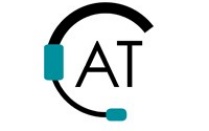Steps 2.1 through 2.3
Key question to answer in Activity Stage 2: What is the breadth of potential applications for the intended free Software output outside the targeted field, and what must be known about them?
To view supporting evidence, click on magnifying glass icons or hyperlink text.
Click on the toolbox icon to view tools related to each step.
Click on table icon to view subcategories of Freeware.
Step 2.1
Define intended project outcome of development effort in the context of a technology-related innovation embodied in a software application or Do-It-Yourself instructions, accompanied by the requirements to download, access and use it.
Step 2.2
Gather input from key stakeholders to assess value (business, market and technical) regarding the envisioned free sofware application. This may involve a mock ups, story boards or wireframe models. To the extent it is relevant to future deployment, consider protecting core software operations through a registered copyright.
Protecting Intellectual Property (copyright for software or DIY instructions) preserves the creator's rights as much as it controls the rights of others to use it. Although it is intended to be free, the valuability assessments determine if it is worth doing at all.
Step 2.3
Conduct a preliminary SLOT analysis (strengths, limitations, opportunities, threats) of the envisioned project, with input from key stakeholders, to identify potential barriers and facilitators to achieving delivered deliverable. All monetary aspects — from financing the project, to the cost of producing the product, and the eventual selling price — are critical issues.
Key question: Is the envisioned Freeware disruptive to current standard operating procedures or processes?
Decision Gate 2
Does the proposed solution and path to output/outcome seem feasible to implement and accomplish? The project leader must decide now if envisioned project output and path to eventual product/service outcomes are still considered innovative (i.e., novel, feasible, useful) in light of results from objective value valuability assessments and SLOT analysis. A decision to continue initiates Stage 3 Research which requires secondary research to identify all knowledge relevant to project, and as necessary primary research to generate new to the world knowledge not available through exisitng literature or expertise.
Note: The NtK Model for Freeware contains Stages, Steps and Gates that may vary across the five sub-categories, as described in the five columns below.
| Freeware | Fee App | Freemium/>$5 | Free DIY | Fee DIY/Training |
|---|---|---|---|---|
| May only need to implement the initial offering sufficient to satisfy the funder's requirements | Internal development plus commercial feasibility analysis required | Internal development plus commercial feasibility analysis required | May only need to implement the initial offering sufficient to satisfy the funder's requirements | Internal development plus commercial feasibility analysis required |









